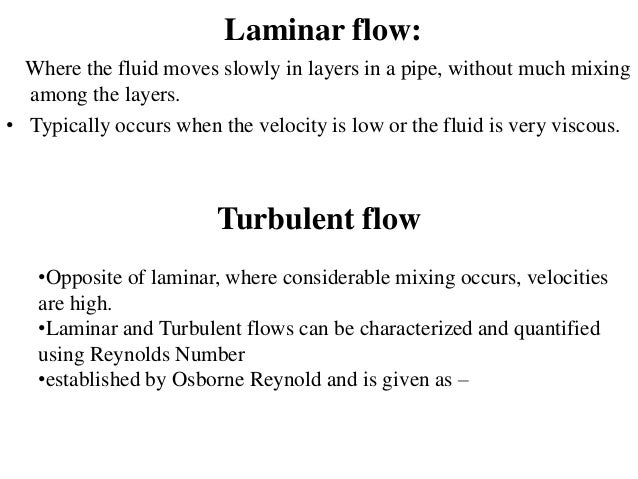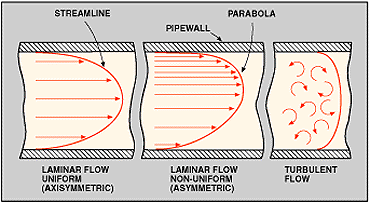
Third, F is inversely proportional to the distance between the plates L. This relationship seems reasonable, since A is directly proportional to the amount of fluid being moved. Second, F is proportional to the area A of the plate.

First, F is directly proportional to v (until the speed is so high that turbulence occurs-then a much larger force is needed, and it has a more complicated dependence on v). When the top plate is pushed to the right, it drags the fluid along with it.Ī force F is required to keep the top plate in Figure 3 moving at a constant velocity v, and experiments have shown that this force depends on four factors. The graphic shows laminar flow of fluid between two plates of area A. We shall concentrate on laminar flow for the remainder of this section, leaving certain aspects of turbulence for later sections.įigure 3. The drag both between adjacent layers of fluid and between the fluid and its surroundings forms swirls and eddies, if the speed is great enough. First, any obstruction or sharp corner, such as in a faucet, creates turbulence by imparting velocities perpendicular to the flow. Streamlines are smooth and continuous when flow is laminar, but break up and mix when flow is turbulent. The lines that are shown in many illustrations are the paths followed by small volumes of fluids. When there is turbulence, the layers mix, and there are significant velocities in directions other than the overall direction of flow. Layers flow without mixing when flow is laminar. (credit: Creativity103)įigure 2 shows schematically how laminar and turbulent flow differ. If you watch the smoke (being careful not to breathe on it), you will notice that it rises more rapidly when flowing smoothly than after it becomes turbulent, implying that turbulence poses more resistance to flow. The smooth flow is called laminar flow, whereas the swirls and eddies typify turbulent flow. Smoke rises smoothly for a while and then begins to form swirls and eddies.

For non-circular pipes, such as rectangular ducts, the critical Reynolds number is shifted, but still ∼ O ( 10 3 ), can happen in channels with special geometrical shapes, such as the Tesla valve.Figure 1. For circular pipes of different surface roughness, at a Reynolds number below the critical value of approximately 2000 pipe flow will ultimately be laminar, whereas above the critical value turbulent flow can persist, as shown in Moody chart. Depending on the effect of viscosity relative to inertia, as represented by the Reynolds number, the flow can be either laminar or turbulent. The behaviour of pipe flow is governed mainly by the effects of viscosity and gravity relative to the inertial forces of the flow. Pipe flow is subject to frictional losses as defined by the Darcy-Weisbach formula. In order to conceptualize head along the course of flow within a pipe, diagrams often contain a hydraulic grade line (HGL).
#Laminar flow pipe full#
The exception to this is when a storm sewer operates at full capacity, and then can become pipe flow.Įnergy in pipe flow is expressed as head and is defined by the Bernoulli equation.
#Laminar flow pipe free#
Storm sewers are closed conduits but usually maintain a free surface and therefore are considered open-channel flow. Not all flow within a closed conduit is considered pipe flow. Pipe flow, being confined within closed conduit, does not exert direct atmospheric pressure, but does exert hydraulic pressure on the conduit. Pipe flow does not have a free surface which is found in open-channel flow. These two types of flow are similar in many ways, but differ in one important aspect. The other type of flow within a conduit is open channel flow.

In fluid mechanics, pipe flow is a type of liquid flow within a closed conduit, such as a pipe or tube. Type of liquid flow within a closed conduit


 0 kommentar(er)
0 kommentar(er)
